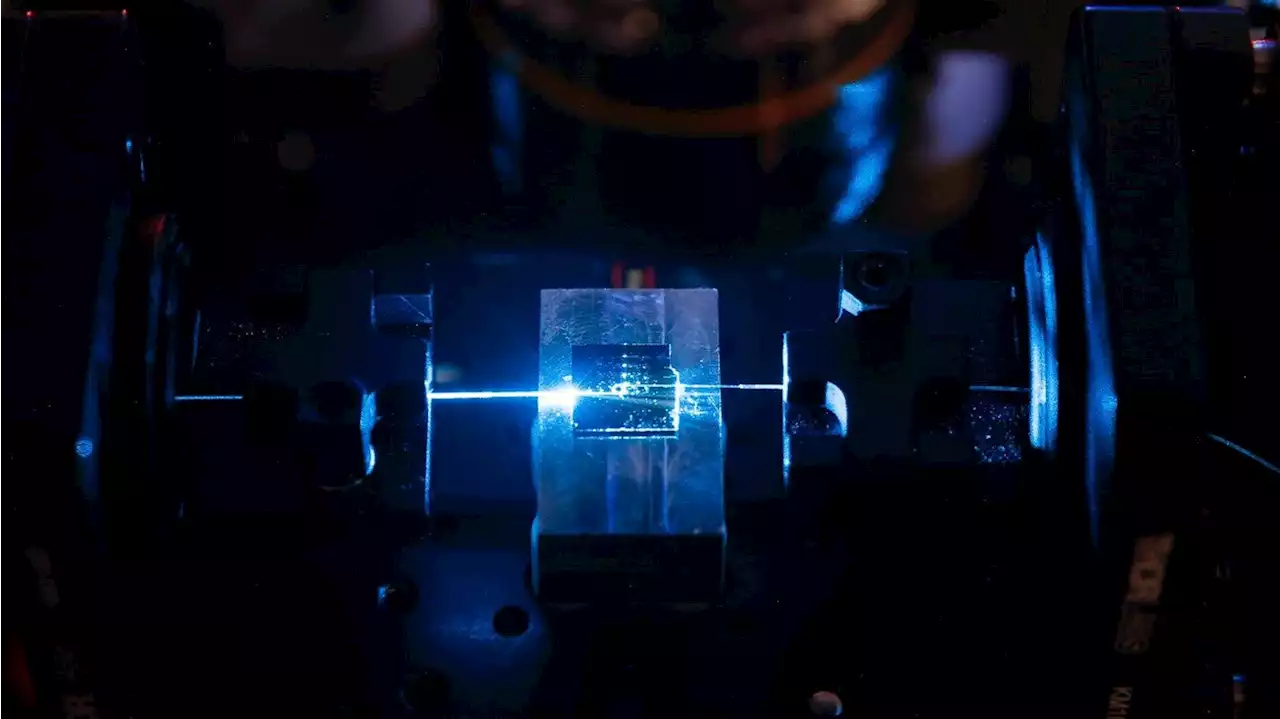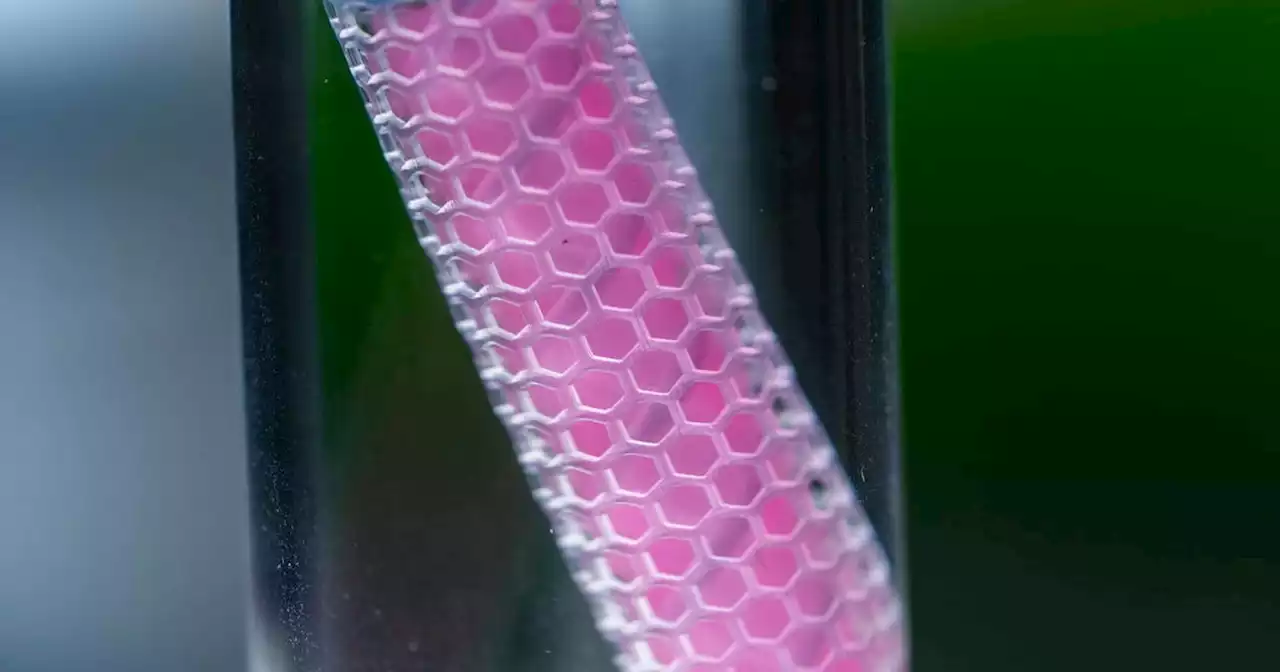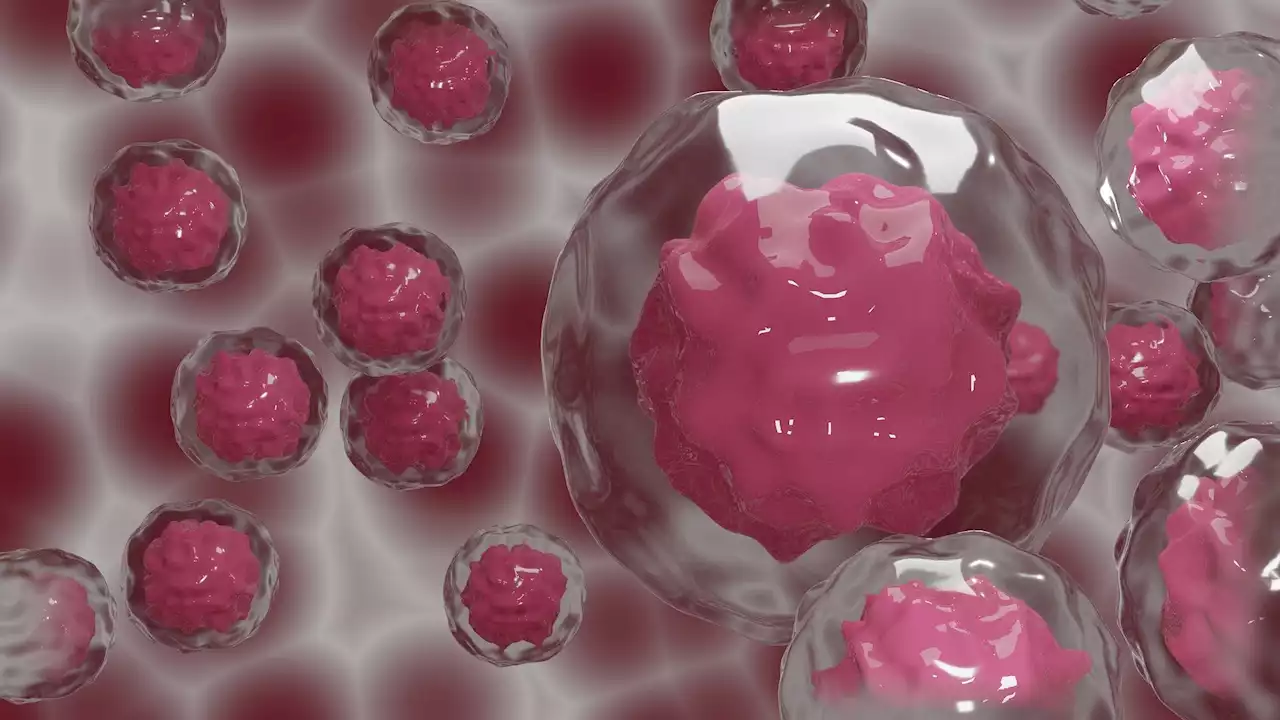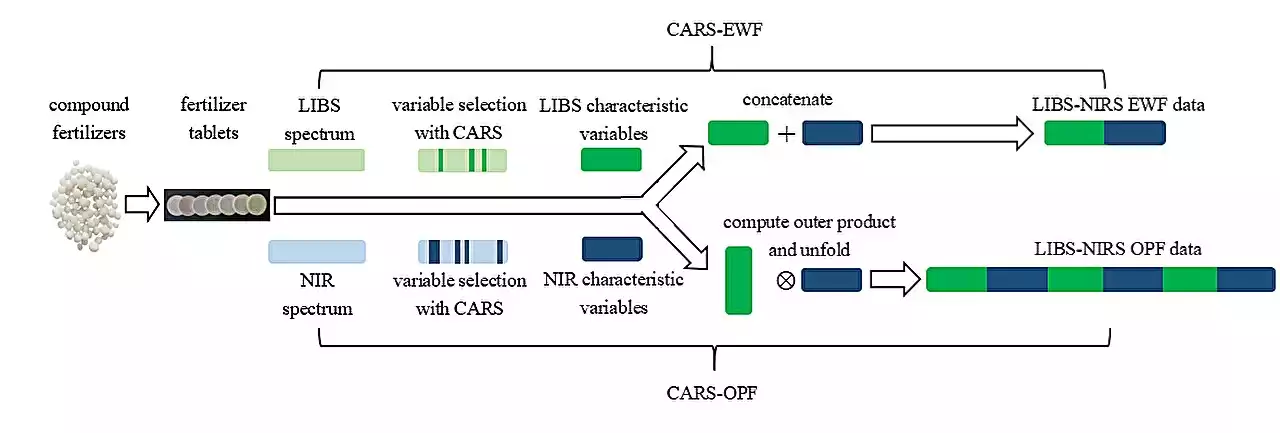In a study published in Talanta, a research team led by Prof. Wu Yuejin from the Hefei Institutes of Physical Science of the Chinese Academy of Sciences has developed a data fusion strategy based on near-infrared spectroscopy (NIRS) and laser-induced breakdown spectroscopy (LIBS) for the rapid and accurate detection of the main components of compound fertilizers.
In a study published in, a research team led by Prof. Wu Yuejin from the Hefei Institutes of Physical Science of the Chinese Academy of Sciences has developed a data fusion strategy based on near-infrared spectroscopy and laser-induced breakdown spectroscopy for the rapid and accurate detection of the main components of compound fertilizers.
They used 168 compound fertilizer samples as test objects to analyze the LIBS-NIRS data under different optimization conditions and methods. And found that the LIBS-NIRS data fusion model based on competitive adaptive reweighted sampling combined with outer product fusion and competitive adaptive reweighted sampling combined with equal weight fusion have better quantitative analysis performances than the single spectroscopic methods.
The combination of LIBS-NIRS methods based on CARS-OPF and CARS-EWF shows promise for the rapid and accurate detection of key elemental contents in compound fertilizers. The determination coefficients of prediction for the contents of the three elements in compound fertilizers using the proposed LIBS-NIRS models ranged from 89.5% to 96.2%. The results of the best models were improved by 0.25% to 5.62% when compared with those obtained by the NIRS method, and by 10.6% to 33.
"Based on this study, we can further combine multiple spectrometers to develop highly accurate detection devices," said Dr. Wang, corresponding author of the study,"it has a good prospect in the application of online accurate monitoring of compound fertilizer quality.
Australia Latest News, Australia Headlines
Similar News:You can also read news stories similar to this one that we have collected from other news sources.
 Researchers fabricate chip-based optical resonators with record low UV lossesResearchers have created chip-based photonic resonators that operate in the ultraviolet (UV) and visible regions of the spectrum and exhibit a record low UV light loss. The new resonators lay the groundwork for increasing the size, complexity and fidelity of UV photonic integrated circuit (PIC) design, which could enable new miniature chip-based devices for applications such as spectroscopic sensing, underwater communication and quantum information processing.
Researchers fabricate chip-based optical resonators with record low UV lossesResearchers have created chip-based photonic resonators that operate in the ultraviolet (UV) and visible regions of the spectrum and exhibit a record low UV light loss. The new resonators lay the groundwork for increasing the size, complexity and fidelity of UV photonic integrated circuit (PIC) design, which could enable new miniature chip-based devices for applications such as spectroscopic sensing, underwater communication and quantum information processing.
Read more »
 Researchers prepare for exascale supercomputer simulations of nuclear reactorsNuclear energy is responsible for approximately one-fifth of total electricity used in the U.S., and nearly half of the country's renewable electricity. Most of the reactors generating this electricity were built decades ago. The construction of new nuclear reactors that use advanced technologies and processes could help grow the amount of carbon-free electricity the nuclear power industry produces and help the U.S. progress toward a net zero economy.
Researchers prepare for exascale supercomputer simulations of nuclear reactorsNuclear energy is responsible for approximately one-fifth of total electricity used in the U.S., and nearly half of the country's renewable electricity. Most of the reactors generating this electricity were built decades ago. The construction of new nuclear reactors that use advanced technologies and processes could help grow the amount of carbon-free electricity the nuclear power industry produces and help the U.S. progress toward a net zero economy.
Read more »
 Decoding Treatment-Resistant Depression: Researchers Identify Crucial Biomarker That Tracks RecoveryHarnessing the power of explainable AI, researchers have unveiled the first insights into the complex workings of deep-brain stimulation therapy for treatment-resistant depression. A team of leading clinicians, engineers, and neuroscientists has made a groundbreaking discovery in the field of tre
Decoding Treatment-Resistant Depression: Researchers Identify Crucial Biomarker That Tracks RecoveryHarnessing the power of explainable AI, researchers have unveiled the first insights into the complex workings of deep-brain stimulation therapy for treatment-resistant depression. A team of leading clinicians, engineers, and neuroscientists has made a groundbreaking discovery in the field of tre
Read more »
 Northwestern researchers get $45M to develop implant to sense and treat cancerNorthwestern developing implant to sense and treat cancer
Northwestern researchers get $45M to develop implant to sense and treat cancerNorthwestern developing implant to sense and treat cancer
Read more »
 Researchers realize direct conversion of methane with oxygen at room temperatureDirect conversion of methane (CH4) to high-value-added chemicals at room temperature, by directly using abundant and low-cost molecular oxygen (O2) as an oxidant, is an ideal route for CH4 utilization. But it remains a challenge due to the chemical inertness of methane and low activity of O2.
Researchers realize direct conversion of methane with oxygen at room temperatureDirect conversion of methane (CH4) to high-value-added chemicals at room temperature, by directly using abundant and low-cost molecular oxygen (O2) as an oxidant, is an ideal route for CH4 utilization. But it remains a challenge due to the chemical inertness of methane and low activity of O2.
Read more »
 Researchers improve fitness of cells used in cell transplantsA readily available, inexpensive, small molecule drug can improve the fitness of hematopoietic stem and progenitor cells (HSPCs) that are modified outside the body, potentially improving the success of procedures such as ex vivo gene therapy, according to a new study by researchers at Children's Hospital of Philadelphia (CHOP).
Researchers improve fitness of cells used in cell transplantsA readily available, inexpensive, small molecule drug can improve the fitness of hematopoietic stem and progenitor cells (HSPCs) that are modified outside the body, potentially improving the success of procedures such as ex vivo gene therapy, according to a new study by researchers at Children's Hospital of Philadelphia (CHOP).
Read more »
